
There are a multitude of different types of engineers—from Aerospace Engineers to Zoo Engineers (yes, that is a real thing!), engineering is a broad term for specialized people that have one major thing in common: the Engineering Design Process. The Engineering Design Process (EDP) is a step-by-step method of solving a problem by creating something tangible with a specific function. That is a fancy way of saying, “this is the way to think like an engineer!”
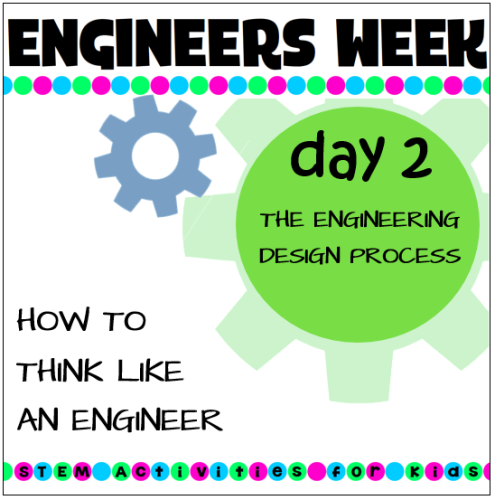
The Engineering Design Process consists of steps that different groups may label differently. Regardless of what each step in the process is called, the order and content of each step is crucial so that kids come to viable solutions. The depth of understanding of this process will also equip kids with an invaluable method of thinking and tools to use in real life problem solving. The following description of each step in the EDP provides a quick glimpse into what the primary focus is in each part of the process. For helpful worksheets for your mini-engineers to apply the EDP to a design challenge as well as an engaging design activity to practice with, check out the freebie linked at the end of this post.
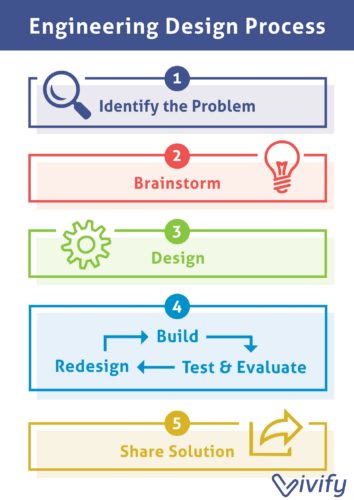
The first step in the EDP is to Identify The Problem. It is crucial that this step not be completed without thorough consideration. Identifying the problem includes discerning what is needed as well as any constraints or rules that must be followed.
Next comes Brainstorming! Creativity is king here, but it can also be overwhelming for kids to know where to start in coming up with a feasible idea. Encourage them to look at each material available and write out how each material may be useful in solving the problem.
Now for the Design phase! From the list made in the brainstorming step, a design may be drawn showing key components previously identified as important. Labeling each part in their sketch will help them in the next step as well as keep inventory of how much of each material is needed.
Then comes the moment the students have been waiting for – Build! From their design sketch, kids can bring their creations to life. Here, they may discover that some materials will not work as they had planned and some changes may be necessary.
Once the designs have been built, Testing may begin. This step is where frustration may set-in and many kids become discouraged if their design continues to fail. The key is teaching that failure is an important part of the Engineering Design Process. Failure is what shapes designs to their optimal performance. Because of this truth, failure should be celebrated as an opportunity to make something better!
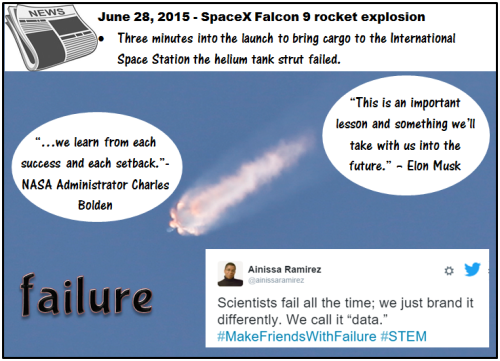
Great examples of failure and its benefits can be found throughout history as well as in current events!
For more on the importance of failure along with some teaching tips and related children’s books about celebrating failure, visit here.
There is, however, a right way to fail—that is, failure is only positive if learned from and used for improvement. If a design fails during testing, ask the students to write down what went wrong and make notes on how to resolve any issues. Then any design changes must be made before another trial is attempted. This cycle of test/evaluate – Redesign – and build may repeat for a little while until success is achieved. If there does not seem to be any progress being made, ask students to observe what is/is not working in other groups’ designs. After a successful test, it is helpful for students to make a sketch of their final design for comparison and reflection.
Arguably, the most important part in the EDP is the final step—Share the Solution! Every scientific discovery or feat of engineering would be a waste if it weren’t shared with the world to glean from its success as well as stories of its failures along the way. Students should share their designs with the class and what they learned from any failures.
A great way to explain this process in a real-world context is this video from NASA.
To celebrate Engineers Week and to practice the Engineering Design Process, follow this link for a freebie design challenge that will walk students through the EDP while building a balloon powered car!
In this challenge, kids will harness the power of a balloon to propel a vehicle forward at least 5 feet. A list of suggested materials is provided along with design constraints and considerations. Take it a step further with a math connection calculating the average speed of the vehicle. The challenge sheet also provides a STEM Career Connection to Industrial Engineering.
Some tips from our experience when conducting this challenge:
- Students should complete this individually or in partners. More than 2 will not allow everyone to participate.
- For the body of the car, you can use a foam meat tray instead of cardboard. These are often sold at grocery stores for a few dollars.
- Make sure to complete testing on a slick non-carpeted surface
- For cleanliness, have an assigned student per team to blow into the balloon!
- For more ideas, you can check out the PBS Design Squad video: http://pbskids.org/designsquad/build/4-wheel-balloon-car/
Happy Engineers Week to you and your budding engineers!
Be sure to check all of the other posts for National Engineers Week!

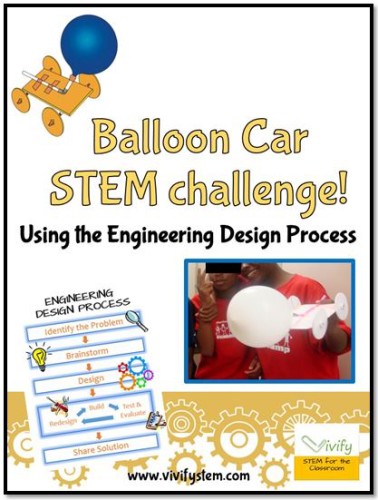
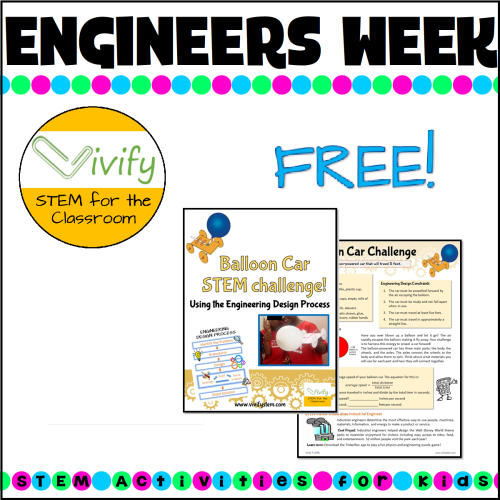
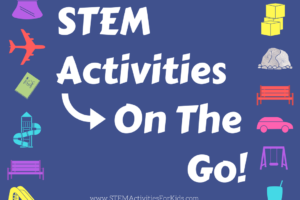
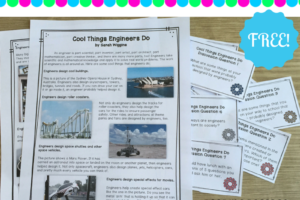

Leave a Reply
Your email is safe with us.